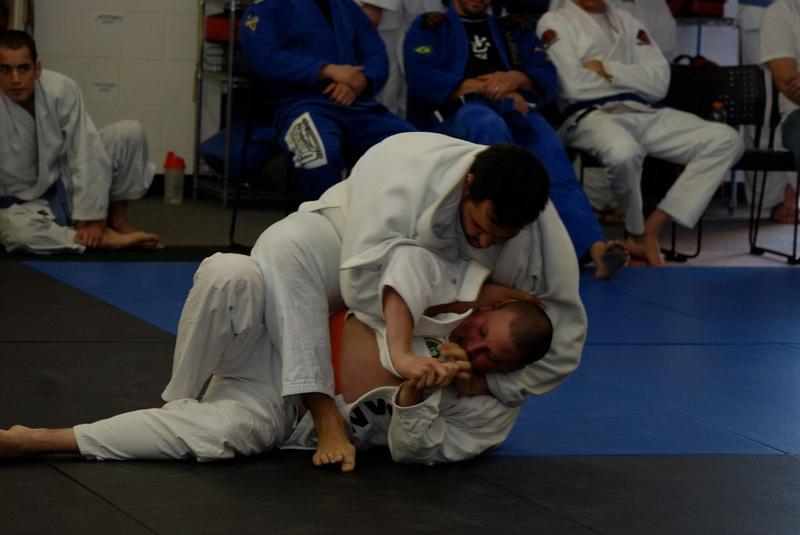Blood chokes are preferred in most situations and for most self defense applications. Blood chokes are so named because they cut off blood supply to the brain. While this is simply a different form of oxygen deprivation, it is often safer to perform in a controlled environment. It works by applying pressure to the carotid arteries and/or jugular veins without actively compressing the air way. This means an opponent can continue to breathe, but will still pass out.
The other advantage to blood chokes over air chokes is that they require relatively little effort. Somebody losing consciousness due to air chokes will often fight far harder than somebody being submitted to a blood choke. Speaking from personal experience, both chokes only take about 5-10 seconds to take effect, but the blood choke was definitely less painful.

Keep in mind, even if performing a blood choke, any held choking position WILL eventually result in death, so please be careful even in training environments. Do NOT attempt this technique without proper, trained supervision.
We’ve now reached the point where we can apply some of the situational addendums we mentioned earlier into the techniques. We’ll first review the basic blood chokes, including any slight modifications, and we’ll move into more advanced chokes in later articles. For now, let’s just discuss the most basic blood choke, the sleeper hold.
Click Here To Learn More About Brazilian Jiu Jitsu Training in Portland!
Technically known as “lateral vascular neck restraint”, the sleeper hold is a widely popular blood choke that is often utilized not only by fighting enthusiasts of all styles, but also by law enforcement officials. By placing one arm around the neck of the opponent, making sure the crook of the elbow is underneath the chin, you can simply squeeze the arm, assisting with the free hand, and an opponent will quickly lose consciousness. There are many variations on this hold, mainly having to do with placement of the hands for maximum choking effectiveness.
This is where clothing comes into play. If you are wearing a gi or thick collared coat, you can assist yourself in choking out an opponent by placing the choking hand on your own sleeve, giving you a firm surface to grip while applying pressure. If an opponent is wearing a gi or thick collared coat, you may be able to utilize it against them, assuming you can’t get a submission hold with your arm. This is also known as a shime-waza choke, and involves any number of techniques. The most common usage is as a booster to a triangle choke. Let’s see how it can help by going over triangle chokes.
Portland Jiu Jitsu Blood Choke: Triangle Choke
A triangle choke is commonly applied from the guard position, and is easier to get into than the gogoplata. By placing one leg around the back of an opponent’s neck, you can then begin choking them by placing your other leg in the crook of your choking foot, and pressing town. This forms a triangle with the opponent’s head in the center, hence the name. Often, it will be to your advantage to control one of the opponents arms by pulling it towards your hip while positioning, thus preventing them from attacking while being choked. While a triangle choke is effective in gaining dominance, it is not always a fast submission because of the space available to the opponent in between the crooks your legs. By grabbing their gi or coat at the opposite collar of the controlled arm, you can expedite a fight by pulling tightly, using the restricted movement of their shoulder to your advantage. This traps their blood vessels, and between your choke and their coat, results in faster submissions.



